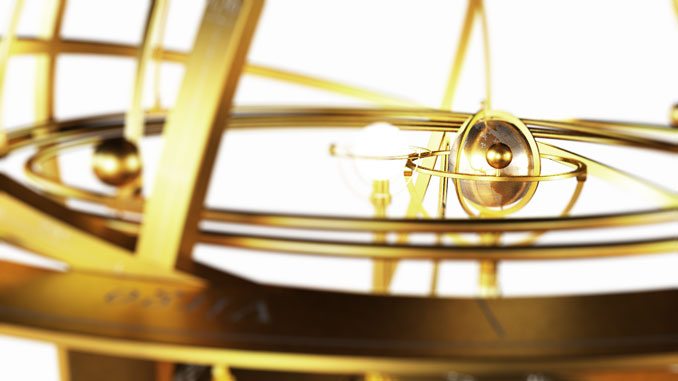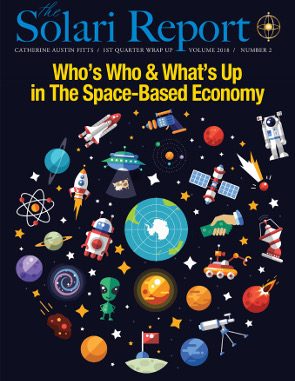An excerpt:
“In all serious disease states we find a concomitant low oxygen state…. Low oxygen in the body tissues is a sure indicator for disease…. Hypoxia, or lack of oxygen in the tissues, is the fundamental cause for all degenerative disease. Oxygen is the source of life to all cells.” ~ Stephen Levine
By Brigitte Mouchet
Life on earth as we know it could not exist without oxygen. Oxygen has not always been abundant in our atmosphere, however. It actually started to build up when cyanobacteria, also known as blue-green algae, appeared and started to convert sunlight into energy (photosynthesis), releasing oxygen as a by-product. Although oxygen accounts for almost 20.95% of our atmosphere, this percentage has been steadily declining over the last 800,000 years. The exact reason for this decline is unclear and is the subject of much debate.
Our body needs oxygen to function properly. We need oxygen to burn the fuel that we take in through the food we eat. When we breathe in, we also transport oxygen to our lungs, where our red blood cells then carry it to the rest of the body.
Breathing is so essential to life that it is worth taking a closer look at what it does for our health and well-being beyond the delivery of oxygen. This week’s Solari Wellness Series will include two interviews, first with Skye Birdsall (a yoga teacher and nutrition coach) and then with Dr. Robert Rowen, an integrative physician known for his pioneering work with oxidation therapy.
Skye Birdsall and I will discuss how breathwork can support our health—whether dealing with physical, mental, or emotional issues—not only by increasing oxygen intake but also through other positive effects on the body. We will also touch on the impact of the breath on the energy field—or biofield—as well as on consciousness. Dr. Rowen and I will talk about solutions that can help us optimize our oxygen utilization.
Join me for these inspiring interviews and check out our video of the week, where Skye Birdsall guides us through the five breathing techniques discussed in the interview to achieve the following results:
- Rest and digest
- Center
- Release CO2, toxins, and stuck emotions
- Release stress and relax
- Stimulate your energy
Additional Resources:
Photosynthesis and respiration: Need a refresher on your biology class? In this short video, Paul Andersen explains the processes of photosynthesis and respiration used by plants and humans to capture and store free energy.
Geological history of oxygen: How our earth evolved from having practically no oxygen in its atmosphere to where we are today (Wikipedia)
Ice cores reveal a slow decline in atmospheric oxygen over the last 800,000 years: Researchers at Princeton University analyzed ice cores collected in Greenland and Antarctica to determine levels of atmospheric oxygen over the last 800,000 years
Gary Kraftsow: Kraftsow, a leading expert in Yoga Therapy, has been a pioneer for over 40 years in the transmission of yoga for health, healing, and personal transformation. His website, Yoga International, provides a wealth of information for those who would like to explore the healing effects of yoga and breathwork.
Hero of the week:
Gregg Semenza is one of the recipients of the 2019 Nobel Prize in Physiology or Medicine for his work on how cells sense and adapt to oxygen availability. This work helps us understand the role of decreased oxygen levels in blood disorders, blinding eye diseases, cancer, diabetes, coronary artery disease, and other conditions.
Let’s Go to the Movies:
In this video, yoga teacher and nutrition coach Skye Birdsall takes us through five breathing techniques and their benefits: rest and digest; center; release CO2, toxins, and stuck emotions; release stress and relax; and stimulate your energy.
Please e-mail your questions for Ask Catherine or post them at the Money & Markets commentary here.
Talk to you Thursday!






Hi Catherine,
I like Buteyko breathing
Oxygen advantage/Buteyko vs Wim Hof
https://www.youtube.com/watch?v=7YEneTJK0Pk
Thanks, Melissa – will take a look!
I’ve had the great fortune over the years of spending time with some of the Kahunas in Hawaii, learning of their culture, their spirituality, and their energetic and healing practices. As part of this training I learned how important specific breathing techniques are in their culture, and when practicing these techniques I could feel my body get very charged with energy, and the hair on my skin would literally stand on end. In addition, in the word “Hawaii”, the “Ha” literally translates into meaning “the breath”, and the entire word “Hawaii” from their native language translates into “the supreme life force that rides on the breath”.
Wow, that’s so cool. I bought an old book from an Elder Native American a few years ago. He was moving to Cali. because he was having a hard time breathing at our high altitude. I need to go look at that book, entitled “Kahuna Magic”.; ) Thanks for the comment.
You’re welcome, Sandra! 🙂 I see that book you mentioned is available for sale online, and people have rated it very highly.
Nice! Thank you for sharing!
You’re welcome, Brigitte! In addition, if you’ve ever heard the Hawaiian term that’s oftentimes been pronounced by non-Hawaiians as “howlee”, it’s a term utilized by native Hawaiians when referring to people who are not native Hawaiians. This term actually comes from the expression within their language, “haole”, which translates into, “those without the breath.”
Very observing of them! The result of a culture that values the mind more than anything else.
Thanks again for your interview with Dr. Kae Thompson, Brigitte. I’ve read the very important books that she recommended, I’ve now been buying iodine from her, she’s introduced me to an amazing enzyme, Serrapeptase, and I’m going to be experiencing her VoiceBio system next week.
Hi Jim,
You’re very welcome! Yes, Serrapeptase is supposed to be amazing. I’m glad you’ll get to try the VoiceBio system. I purchased the software about a year ago, took the training and have been experimenting with it. The amazing thing is that the system indicates clearly what the weakest “link” is in your system, which is what you need to focus on first in order to help your system. What I have noticed is that my voice is different or I have a tendency to lose my voice when I’ve pushed myself too much. So it does seem like there is a connection between our health and our voice.
In 2011, I read on Adam Trombley’s site(Project Earth) that there was a concerted effort to lower O2 in the environment. It was something his father told him. I tried to find the statement on his site but I am unable to locate it.
Perhaps Catherine could question him about it.
I will ask him the next time I see him. His father had pretty deep inside intelligence.
Thank you. That sounds very intriguing.
As I recall, it has something to do with making the environment more suitable for “others”.
Have a sweet day!
Thanks Bridgett and Catherine!
What a great and important topic.
From Wim Hof’s Method Archives of Information https://www.wimhofmethod.com/
_ https://www.ncbi.nlm.nih.gov/pmc/articles/PMC4315448/
_ https://www.wimhofmethod.com/uploads/kcfinder/files/PNAS.pdf
_ http://www.innerfire.nl/files/biology-now-chapter-22-Wim-Hof.pdf
Excellent. THANKS! Can’t wait to hear more about what you have learned from him.
Thank you for this additional information! What Win Hof is doing is fascinating and shows that we have more control over our bodies than we think. And that a little bit of cold doesn’t hurt. Although our comfortable lifestyles have made it more difficult for us to feel comfortable in a cold environment. There are also different body types that may do better in a cold or warm environment.
I am so glad that Brigitte agreed to do this Solari Report on breathwork. I was reading a book about oxygen and sent her the folowing quote –
“A combination of nitrogen and oxygen creates the air we breath. Many researchers believe that most of us cannot extract all the oxygen we need from air because the air itself is oxygen depleted, especially in large cities and industrial areas. An increase in industrial air pollution and automotive carbon monoxide contribute to escalating oxygen deficiency througout the world. Air bubbles trapped in ancient fossilized amber were found to contain oxygen levels of 38%. We have almost 50% less oxygen available to use today. Before the advent of the industrial revolution, the oxygen content of our air was 32%. In the early 1900s the content was reduced to 24% As we approach the year 2000 the oxygen content of our air has dropped to an average of 19-21% by volume in relatively unpolluted environments. In large cities the content may be as low as 15% and in industrial areas 10%. This is dangerously low. Scientists believe that if the oxygen content of air were to drop to 7%, it could not support human life.”
From ” Why We Become Oxygen Deficient” in The Oxygen Answer for Health and Healing by Tonita d’Raye Foreword by Dr. Philip Lee Miller
As a financial professional, I have never seen a more perfect trend chart https://www.oxygenlevels.org/
Since I know very little about oxygen levels would welcome all input on best sources about this topic!